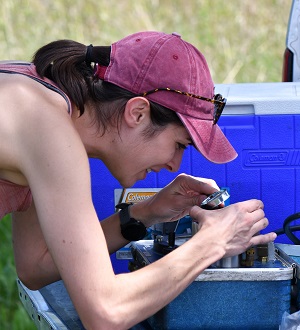
Grassland Ecophysiology
Ecophysiology permeates everything we do. From our work on Konza Prairie woody encroachment to lowveld savanna ecology, we take pride in our ecophys bent. We utilize the classic tools including gas exchange, water potential, fluorescence, hydraulics, and stable isotopes. And we enjoy the simple things in life - like a bivariate plot, a pseudo-replicated study, and a project investigating just how dry the soil has to be before all the plants die.
Click on one of the links below for more information on current projects.
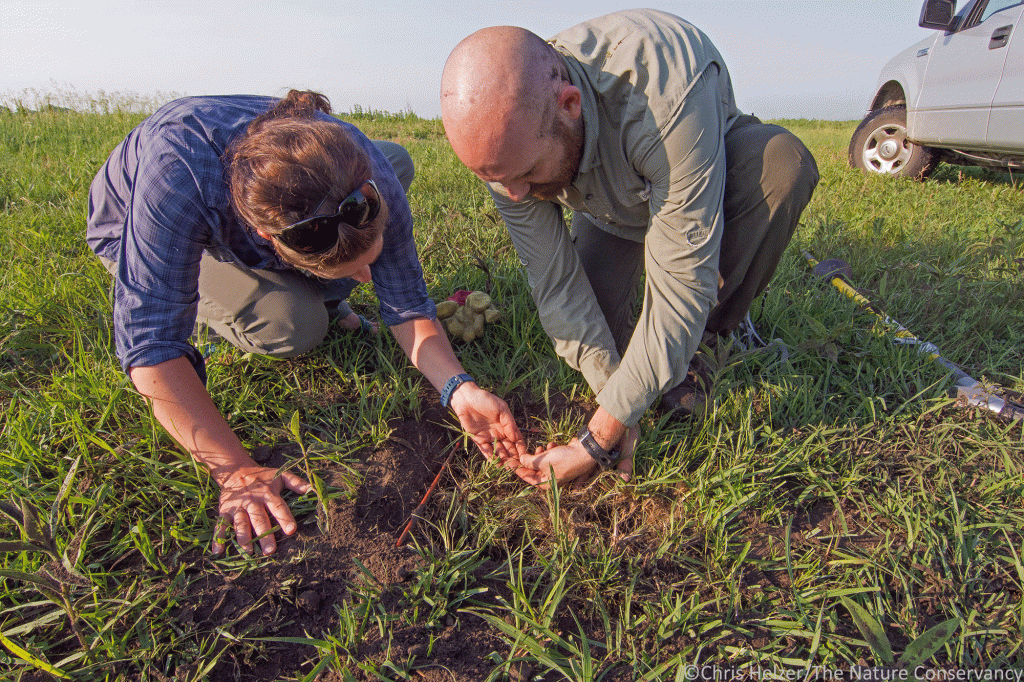
Marissa and Seton collecting grass tissue for microanatomy and NSC analysis (Photo: C. Helzer)
The cellular anatomy of plant tissues has direct impacts on physiological functioning. And yet, variation in cellular anatomy (or microanatomy) is rarely quantified in the same way as cellular physiology. Largely this oversight stems from the time-consuming processes required to prepare tissues for microscopy, and then the time-consuming steps to measure the size, density, and distribution of plant anatomical features. If you are willing to invest the time to learn how to stain and mount tissues, and then the patience to collect high-quality images you will have the ability to link anatomy - physiology in a meaningful fashion beyond trait amalgamations (like SLA)!
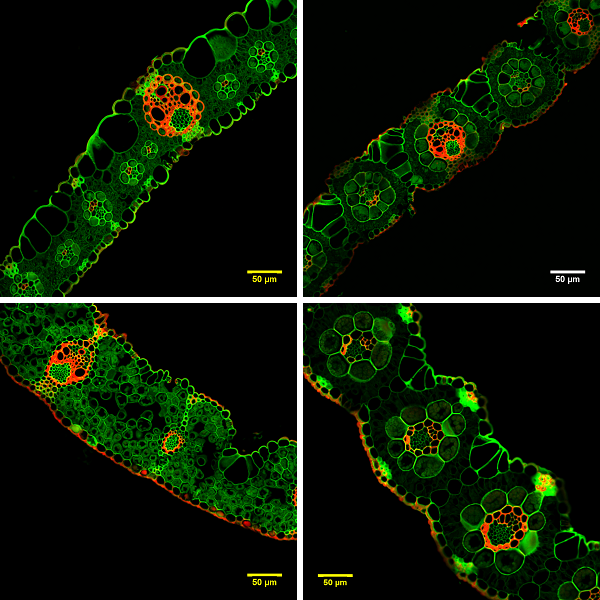
Seton Bachle has become a master of capturing high quality leaf images. Here are examples from 4 different grass tribes (Andropogoneae, Cynodonteae, Paniceae, and Danthonideae.
In our lab, Seton Bachle has been the master microanatomist. Seton and Jesse were originally inspired to collect these types of data from Troy Ocheltree. Over the past 6 years, Seton has honed this skill (to use microanatomy to explain physiology) to be among be best in physiological ecology. Measurements of leaf microanatomy have been used to illustrate that bundle sheath area can predict photosynthetic rates and these microanatomy traits vary with climate variables and water-use strategies within dominant grass species.
Microanatomy Projects have been supported by NSF-LTER:
Konza Prairie LTER: Manipulating drivers to assess grassland resilience.
And by NSF-Dimensions:
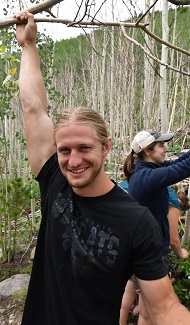
During the pandemic summer of 2020, Greg Tooley (right) began measuring the canopy ecophysiology of rough-leaf dogwood at Konza Prairie in areas that are ungrazed, grazed by bison, and areas with simulated browsing (sensu Rory O'Connor). This project has also recieved considerable support from Seton Bachle and Rachel Keen.
The data has revealed that Leaf Mass Area (LMA) and Nitrogen concentration per area (Na) varied ~3-fold across canopies of C. drummondii resulting in major differences in the physiological functioning of leaves. High LMA leaves had high Jmax, Vcmax, and A2000, while low LMA leaves were found to use a novel strategy for maintaining the light compensation point at low light conditions. C. drummondii also modified its vertical allocation of leaf traits in response to browsing. When browsed, LMA and Na increased at lower canopy depths leading to an overall higher Jmax, Vcmax, and A2000. The resulting physiology along with increased light availability at these depths increased photosynthetic rates, PNUE, and iWUE compared to control islands. These results give a mechanistic understanding to the high LAI canopies and compensatory growth response of C. drummondii—both of which are key factors leading to the success of C. drummondii and other woody plants in grasslands.
This woody physiology project has been supported by NSF-LTER:
Konza Prairie LTER: Manipulating drivers to assess grassland resilience.
And by DOE-BER:
Using root and soil traits to forecast woody encroachment dynamics in mesic grassland.
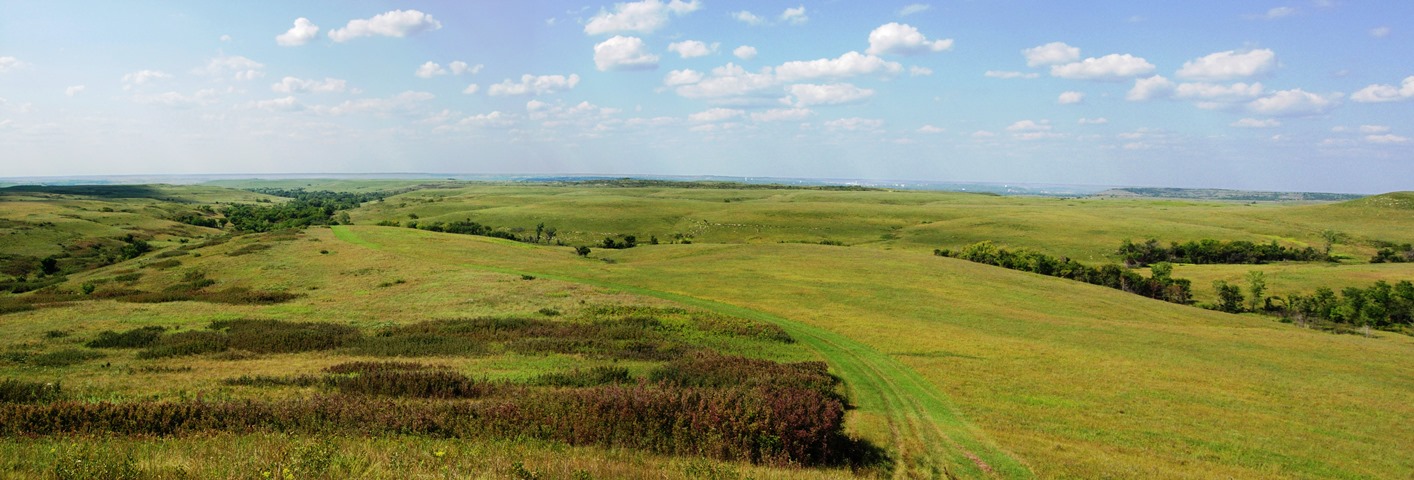
The watershed boundary between K4A and K1B, illustraing the role of fire prevent and accelerating woody encroachment.
Physiological variability within Poaceae
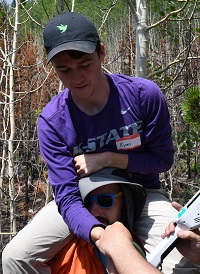
The Konza Prairie has over 500 vascular plant species within 3,487 hectares. Within this field station are over 100 grass species. These species comprise annuals and perennials, native and exotic, C3 and C4 photosynthetic pathways, and 9 different tribes of Poaceae. Within this context, 75 different grass species were collected at the time of flowering in the natural microenvironments from which they live on Konza. By measuring morphological and physiological traits from many species representing a diverse range of phylogenies that all grow in the same area, we aim to see if patterns emerge among these groups and determine if traits of species can are conserved withing higher taxonomic groups such as tribe or C4 lineage.
Ryan Donnelley (right, on the shoulders of Ryan the Elder) is the lead investigator for this project, with statistical and editorial counseling from Emily Wedel. In the summer of 2020, Ryan sampled 5-10 replicates for each species. Each replicate consisted of a group of individuals growing within 3m of each other to minimize the likelihood of population / genetic differences within each replicate. Spacing between replicates varied among species; replicates were spaced out from one another at distances ranging from a few meters to a few kilometers depending on the abundance of the species to maximize genetic diversity among traits. The traits collected included rates of gas exchange, including A/ci measurements, osmotic potential, leaf area, leaf wet/dry mass, ambient leaf thickness at time of collection, plant flowering height, plant vegetative height, leaf C/N, and leaf δ13C and δ15N isotopic signatures. These data are being analzyed, and the results summarized for publication soon.

Some of our lesser known grass species: Bothriochloa laguroides, Cenchrus longispinus, Diarrhena obovata, Dichanthelium praecocius, and Paspalum pubiflorum.
Project supported by NSF-MSB:
And by NSF-LTER:
Konza Prairie LTER: Manipulating drivers to assess grassland resilience.